Writing Teaching Resources
Teaching writing strategies and the writing process this school year? Explore a comprehensive collection of teacher resources for elementary and middle school ELA teachers — all created by teachers!
Stocked with graphic organizers, writing prompts, templates, worksheets and so much more, this collection of printable and digital activities is designed to help you as you help your students become more effective communicators and unleash their creativity and imagination.
Save time on lesson planning with resources that have been through a careful review process by an expert member of our teacher team to ensure they're ready for your classroom and your students!
Are you looking for tips and tricks to add to your teacher toolkit this school year? Read on for a primer from our teacher team, including engaging activities for teaching writing in elementary and middle school and a look at some of the different writing strategies your students will need to learn.
11 Writing Strategies Kids Should Know by the End of Middle School
We can't talk about teaching kids to write without talking about the different writing strategies that can help them do just that!
When it comes to teaching our students to become confident writers who articulate their ideas effectively, here are some of the strategies our teacher team prioritizes:
1. Brainstorming
Brainstorming is something we often do in the classroom, and it's a crucial part of learning to generate the ideas that will drive students' writing as they progress through their educational journey. Kids should know how to create a list of potential topics or points related to a particular writing assignment.
With younger students, this is often done as a whole group by writing ideas and points on chart paper. In upper grades, students transition over to using text-based materials to generate ideas and talking points.
2. Outlining
Before diving directly into any assignment, our students should be able to create a structured framework or outline. Teaching students how to create this outline will help them organize their thoughts and arguments for penning their essays, reports and research papers.

3. Using Graphic Organizers
Technically graphic organizers are classroom tools, so you may not think of their use as a writing strategy per se. However, learning to use these tools is another means of providing kids with the tools they need to organize their ideas and information before they sit down to write.
These organizers are particularly useful for expository writing — students can use them to outline main ideas, supporting details, and transitions.
Students can also take advantage of story maps when they are working on narrative writing to plot the key elements of a story, such as characters, setting, conflict, rising action, climax and resolution.
Graphic organizers such as the OREO strategy and hamburger paragraph are also great tools for students to use when working with opinion and persuasive texts.
4. Freewriting
Writer's block is the enemy of creativity, and it can easily frustrate young students who don't know where to begin.
When students freewrite, they write continuously without worrying about grammar or punctuation. This writing strategy can be extremely freeing — hence the name! — and helps frustrated writers move past that writer's block, generating fresh ideas.

5. Peer Editing
Learning to review and provide constructive feedback on each other's work is a great writing strategy to employ in your classroom to help students improve their writing quality and enhance their editing skills.
The strategy allows your students to learn from one another, and it arms them with an important tool they can use well into the future — calling on peers to provide a critical eye to a piece of writing.
6. Using Sensory Language
Working on descriptive writing? With this writing strategy, students engage the reader's senses through vivid and sensory language to create a more immersive experience.
7. Including Transitions and Connectives
As students become more proficient in the writing process, learning to use transitional words and phrases allows them to create smooth transitions between sentences and paragraphs. This strategy makes their writing more coherent and polished.
8. Incorporating Evidence
In persuasive, opinion, and expository writing, students are taught to support their claims with evidence and examples to strengthen their arguments.
It takes some practice to train your students to use evidence in their writing, so it's often a good idea to start with something simple, like the R.A.C.E.S. strategy.
9. Crafting a Thesis Statement
In expository, opinion, and persuasive writing, crafting clear and concise thesis statements that summarize the main point or argument of their essay helps students be more focused and organized in their writing. This strategy can also have the effect of empowering students to express their ideas confidently and persuasively.
10. Incorporating Introductions and Conclusions
With this strategy, students practice crafting effective introductions and conclusions that grab the reader's attention and leave a lasting impression.
11. Following a Revision Checklist
Teaching your students to use a revision checklist is a strategy that will help them be more self-reflective, evaluating their own writing against the checklist criteria and becoming more aware of their strengths and weaknesses.

- Plus Plan
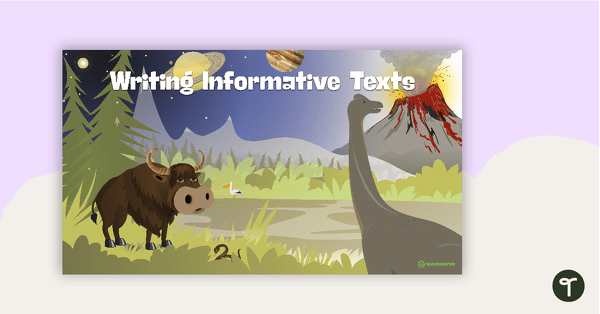
Writing Information Texts Teaching Slides
Teach your students the features of information reports using this detailed slideshow targeted at upper elementary school students.
- Plus Plan
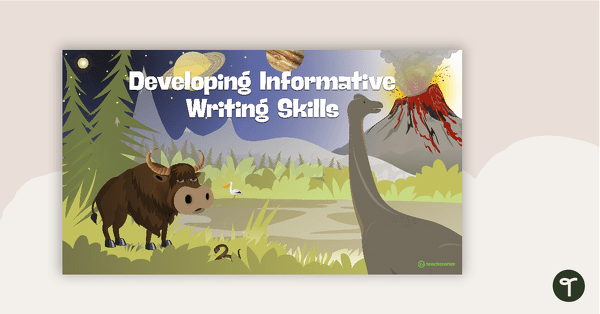
Developing Report Writing Skills Teaching Slides
Use this slide deck to teach your students about the purpose, structural elements and language features of informational texts.
- Plus Plan
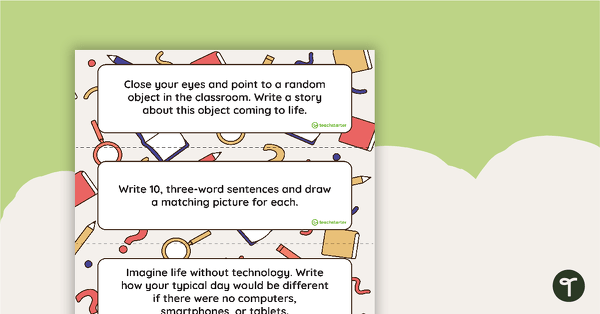
Journal Writing Prompt Cards
46 writer's notebook journal writing prompt cards.
- Plus Plan
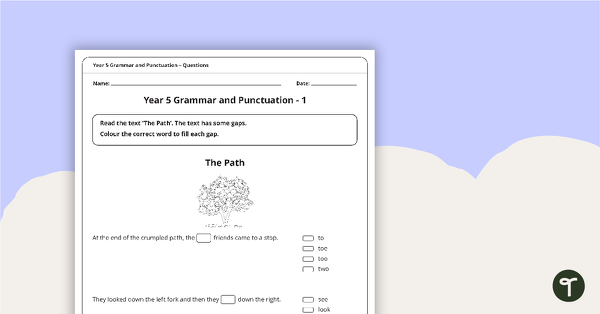
Grammar and Punctuation Assessment Tool - Grade 5
A set of 5 grammar and punctuation assessment tools suited to Grade 5 students.
- Plus Plan

Paragraph Study Grammar Interactive PowerPoint
Interactive PowerPoint presentation allowing students to learn and review grammar by highlighting paragraphs.
- Plus Plan
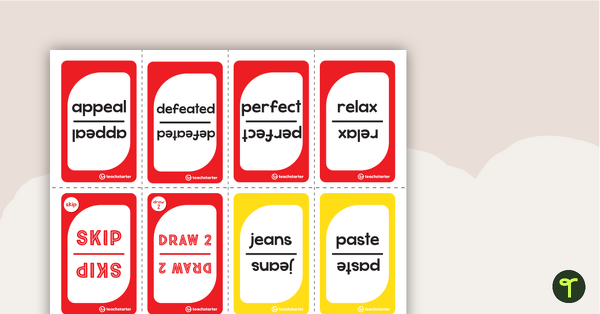
Parts of Speech Card Game – Upper Grades Classroom Game - Set 2
A card game for nouns, verbs and adjectives.
- Plus Plan
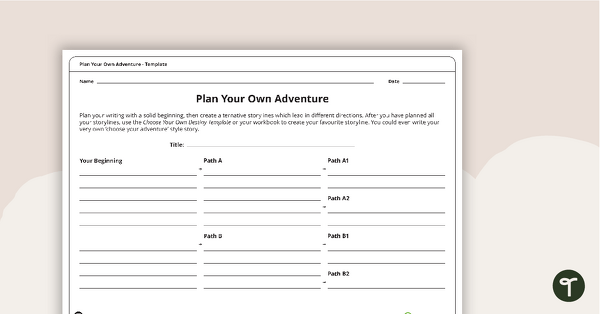
Plan Your Own Adventure - Writing Template
Students use a template to help them plan stories with alternative pathways for their friends to read.
- Plus Plan
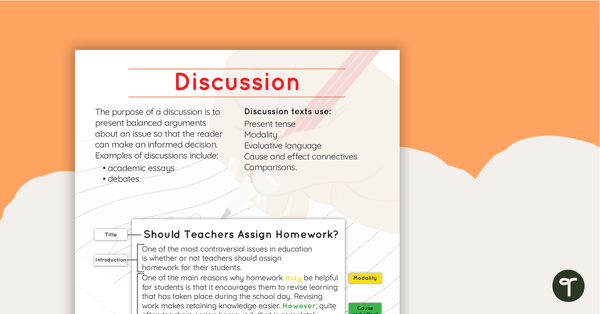
Discussion Text Type Poster With Annotations
A poster about discussions, including an annotated example.
- Plus Plan
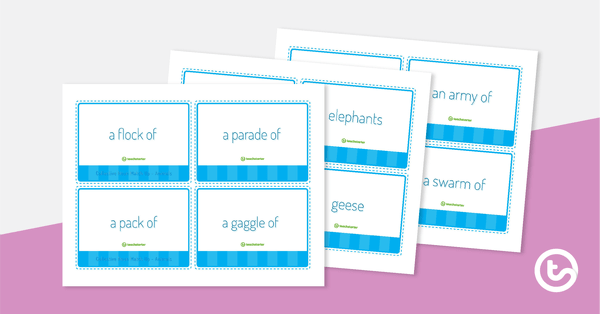
Collective Nouns Matchup Activity - Animals
A pack of 32 cards to use when learning about collective nouns.
- Plus Plan
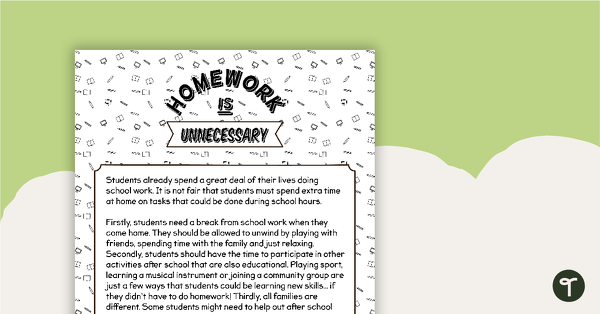
Sequencing Activity - Homework is Unnecessary (Opinion Text)
A sequencing task using an opinion text.
- Plus Plan

Developing Characters Poster Pack - Show, Don't Tell Feelings
Enhance story development and characterization in student writing with a set of 16 Show, Not Tell Posters.
- Plus Plan
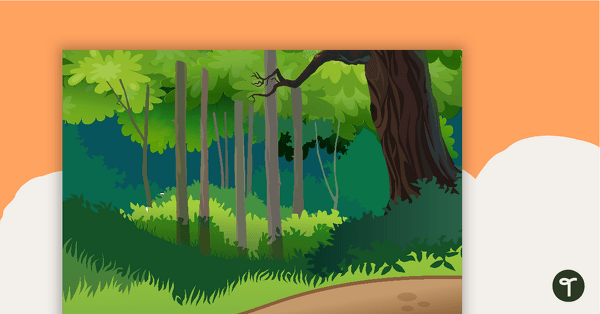
Fairy Tales Settings Posters
A set of 6 fairytale story settings background posters.
- Plus Plan
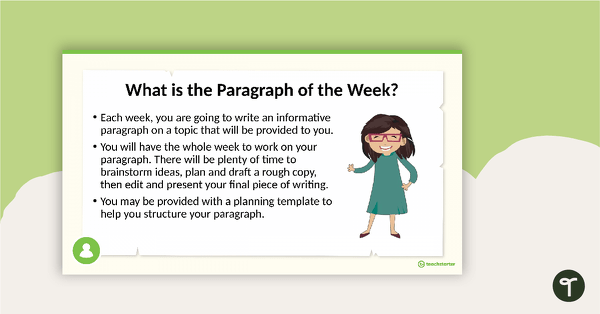
Paragraph of the Week PowerPoint - Informative Paragraphs
A Paragraph of the Week PowerPoint presentation to use when setting up this writing strategy in your classroom.
- Plus Plan
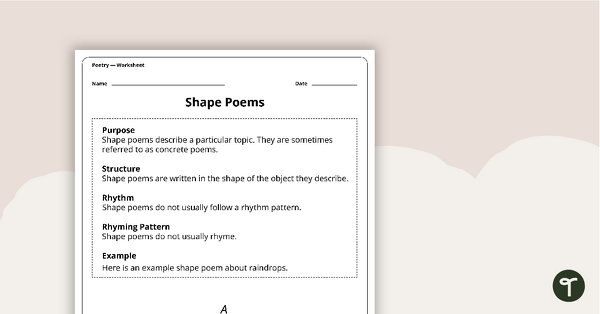
Write a Shape Poem Worksheet
Set your students up for success when writing a concrete poem with this set of scaffolded, easy-to-follow worksheets.
- Plus Plan
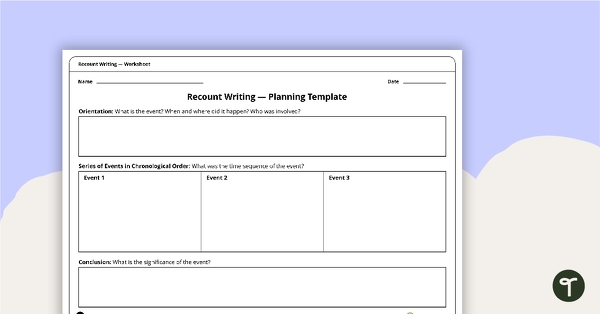
Recount Writing Planning Template
A template for students to use when planning a recount.
- Plus Plan
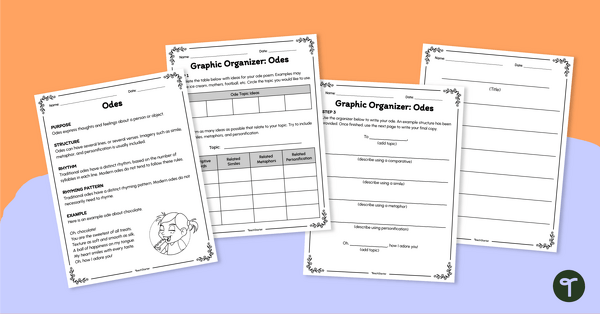
Write an Ode Worksheet
Set your students up for success when writing an ode with this set of scaffolded, easy-to-follow worksheets.
- Plus Plan
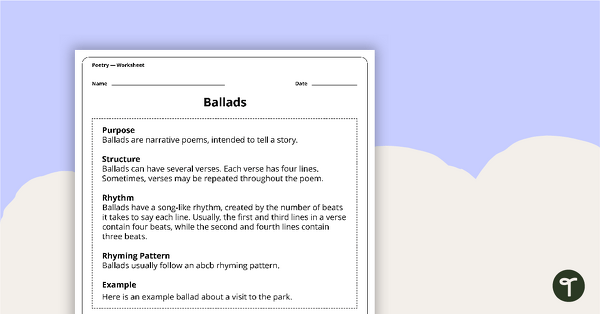
Write a Ballad Worksheet
Set your students up for success when writing a ballad with this set of scaffolded, easy-to-follow worksheets.
- Plus Plan
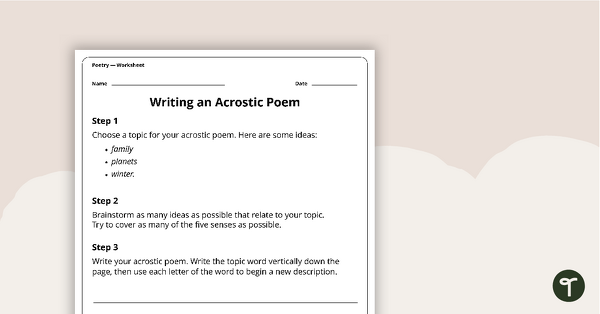
Write an Acrostic Poem Worksheet
Set your students up for success when writing an acrostic poem with this set of scaffolded, easy-to-follow worksheets.
- Plus Plan
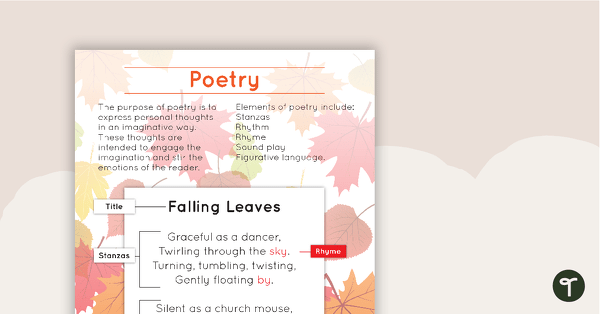
Poetry Anchor Chart With Annotations
Use this poetry anchor chart to introduce your students to the structure and language features of poems through an annotated example.
- Plus Plan

Facts and Opinions - Caterpillars
A fun activity for students to use when identifying facts and opinions about caterpillars.
- Plus Plan
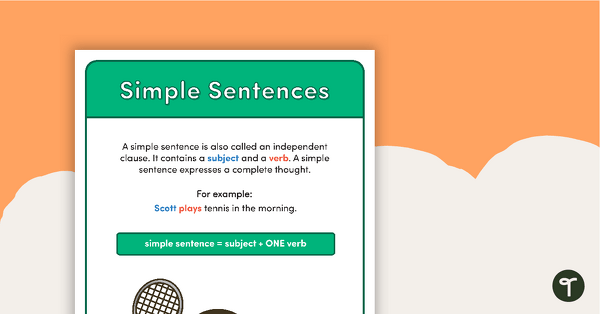
Types of Sentences Posters
A set of 7 posters outlining the structure of various types of sentences.
- Plus Plan
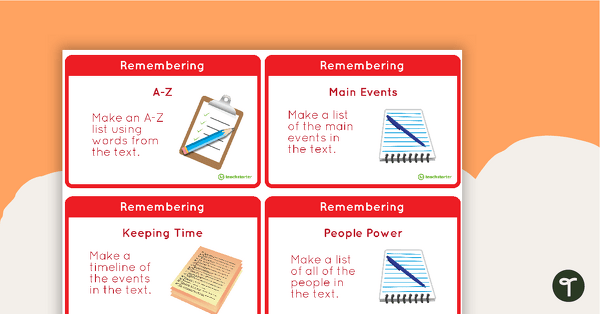
Bloom's Taxonomy Fast Finisher Task Cards - Middle Years
44 Bloom's Taxonomy fast finisher activity cards.
- Plus Plan

Write a Diamante Poem Worksheet
Set your students up for success when writing a diamante poem with this set of scaffolded, easy-to-follow worksheets.
- Plus Plan
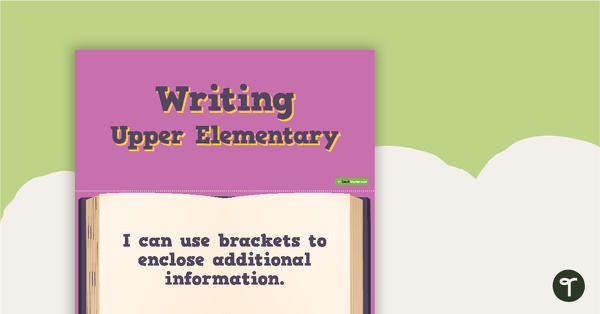
'I Can' Statements - Writing (Upper Elementary)
A set of 25 'I can' statement cards focusing on writing for upper elementary.
- Plus Plan
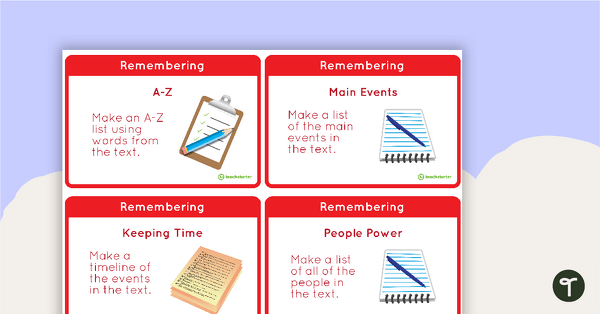
Bloom's Taxonomy Fast Finisher Task Cards - Upper Grades
44 Bloom's Taxonomy fast finisher activity cards.
- Plus Plan
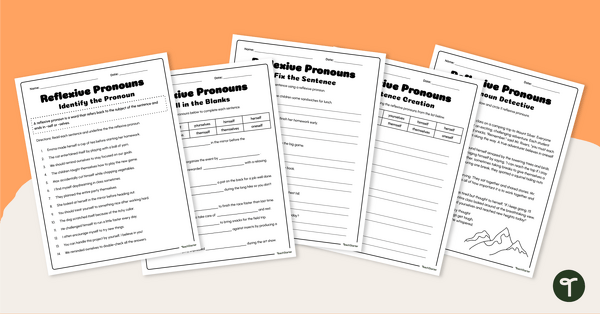
Reflexive Pronouns Worksheet Pack
Use this reflexive pronouns worksheet pack to get your students identifying and using these essential parts of speech.
- Plus Plan
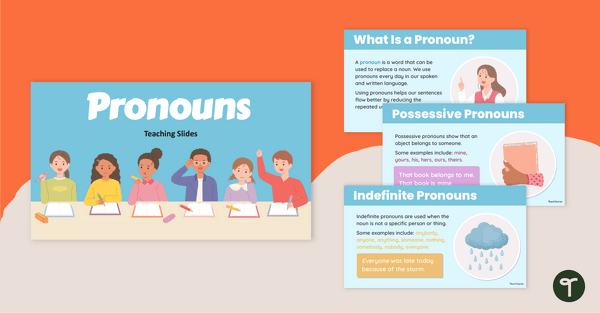
Pronouns Teaching Slides
Use these pronoun slides to teach your students about some of the most common types of pronouns.
- Plus Plan

Possessive Pronouns Interactive Activity
Use these digital possessive pronouns exercises in your grammar lessons to give your students practice in using these essential parts of speech.
- Plus Plan
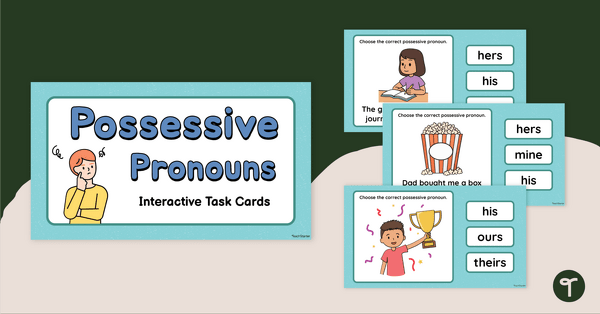
Possessive Pronouns Interactive Task Cards
Use this online possessive pronouns game to get your students identifying and using these important parts of speech.
- Plus Plan
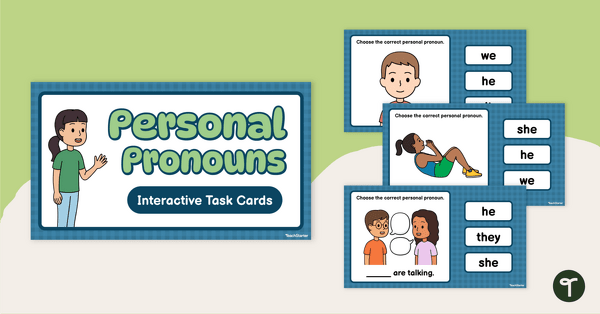
Personal Pronouns Interactive Task Cards
Use this online personal pronouns game to get your students identifying and using these important parts of speech.
- Plus Plan
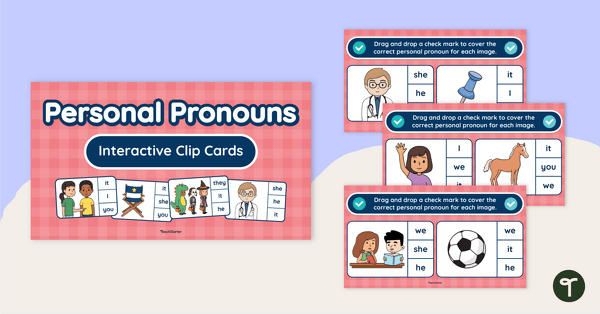
Personal Pronouns Interactive Clip Cards
Do some pronouns practice with your students using this set of 24 digital clip cards.
- Plus Plan
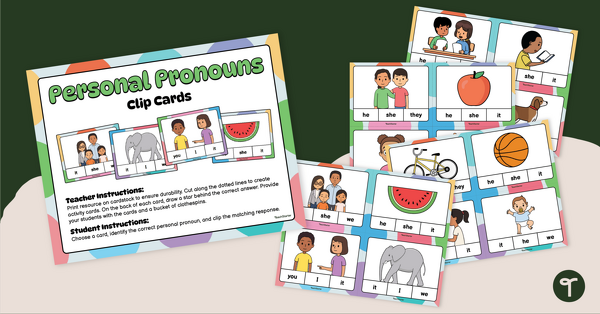
Personal Pronouns Clip Cards
Use these personal pronouns clip cards in your grammar lessons when teaching students about parts of speech.